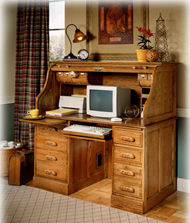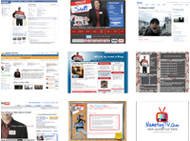
 Creative professionals MUST exist in a creative environment.
Creative professionals MUST exist in a creative environment.
Here’s why:
1. A creative environment provides stimulation.
2. Stimulation creates, expands and refines ideas.
3. Ideas are your major source of income.
Not to mention, the place where you spend the majority of your time needs to be enjoyable!
If you’re looking to motivate your melon, here are 10 Critical Components of Creative Environments:
1. Appeal to your eyes. Multi-sensory stimuli stimulate more ideas. Cover your walls with beautiful art. Include visual representations of your goals, ideas, motivational words on sticky notes, past work you’re proud of, fan mail and other positive images. Blank walls are the enemy!
2. Appeal to your ears. Crank some tunes. Set the ambiance of your room or studio with the right music. Consider creating your own playlist or mix for certain times during the day, projects or moods. Music sets moods.
3. Appeal to your nose. Light candles, incense or other pleasant smelling tools. Smells, fragrance and aromas also have a direct influence on mood. Follow your nose!
4. Appeal to your mouth. Just as long as it isn’t pure sugar or starch. Stick with protein. And don’t eat too much of it, either. Creativity expert Doug Hall says, “When the body is stuffed with grub, your body is spending too much time and energy processing food and your brain in shortchanged.” Carbs are the enemy.
5. Colors. Use pink and orange sticky notes. Buy the Sharpie 36 pack. Collect ideas and information on multi-colored note cards. Colors stimulate creativity.
6. (Dis) Order. It doesn’t have to be spotless, but sometimes disorder can be helpful. Be chaotically tidy.
7. Lose the clocks. Don’t let time impose limits on your creativity. Make it easy to get lost in your ideas. Get lost in your art.
8. Insulation. No, you don’t need to soundproof your walls. But try to avoid working near distracting noise. Wear headphones all day if you have to do! Just be sure you can easily get into your zone. Get lost in your art … seriously.
9. Natural Beauty. Be sure you have quick access to some sort of natural beauty, be it plant life or sunshine. Mother nature is a great artist companion!
10. Toys. Or, anything you can play with on your break to motivate your melon.
NOTE: if you’re not one to be cooped up in a studio or office all day, no worries!
You just need to figure out where your brain thrives.
Make a list of five alternate environments for your creative success. Perhaps your art is more conducive to the park, the bus station or sitting in a public square. If so, great! Experiment by displacing yourself regularly.
Once you’ve narrowed your list down to a few options, visit them regularly. Learn to incorporate various components of creative stimulation into your “portable creative environment.”
That way you can thrive anywhere!
Whatever type of creative environment you choose to create, remember one thing: make it yours.
Customize your surroundings to best fit your learning style, creative abilities and work schedule.
And you WILL motivate your melon!
LET ME ASK YA THIS…
What’s your ideal creative environment?
LET ME SUGGEST THIS…
Interview five other creative professionals like yourself. Find out how they motivate their melons!
* * * *
Scott Ginsberg
That Guy with the Nametag
 Are you a friend of The Nametag Network?
Are you a friend of The Nametag Network?
Read more blogs!
Rent Scott’s Brain!
Download articles and ebooks!
Watch training videos on NametagTV!
Make a name for yourself here…
